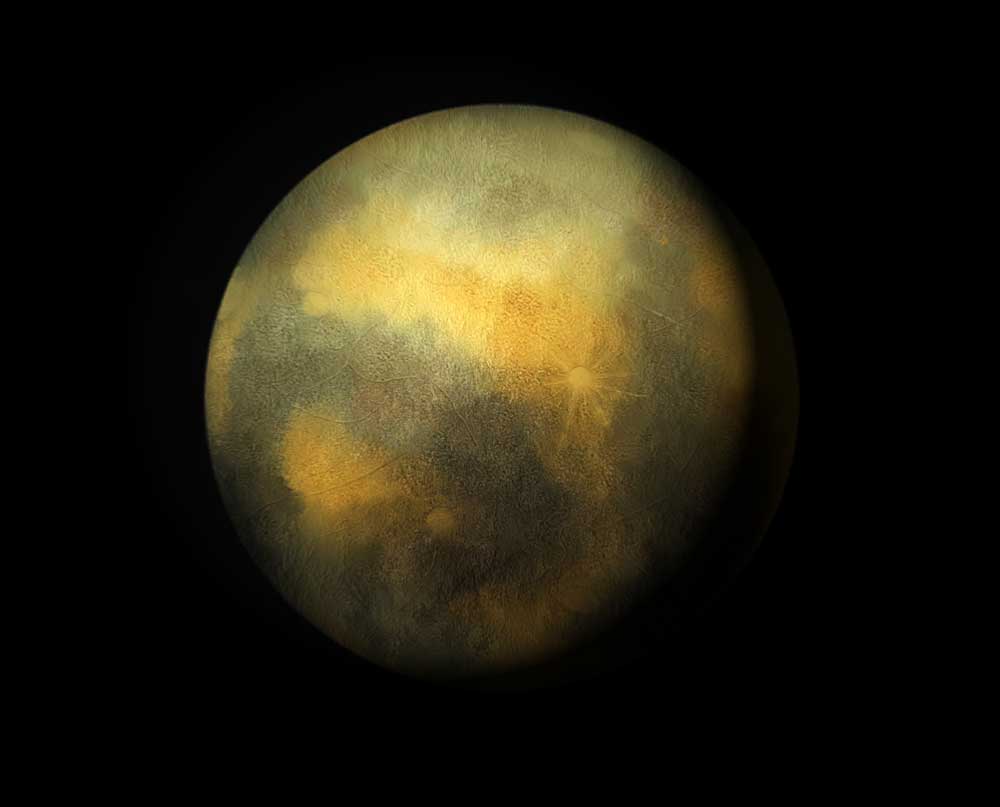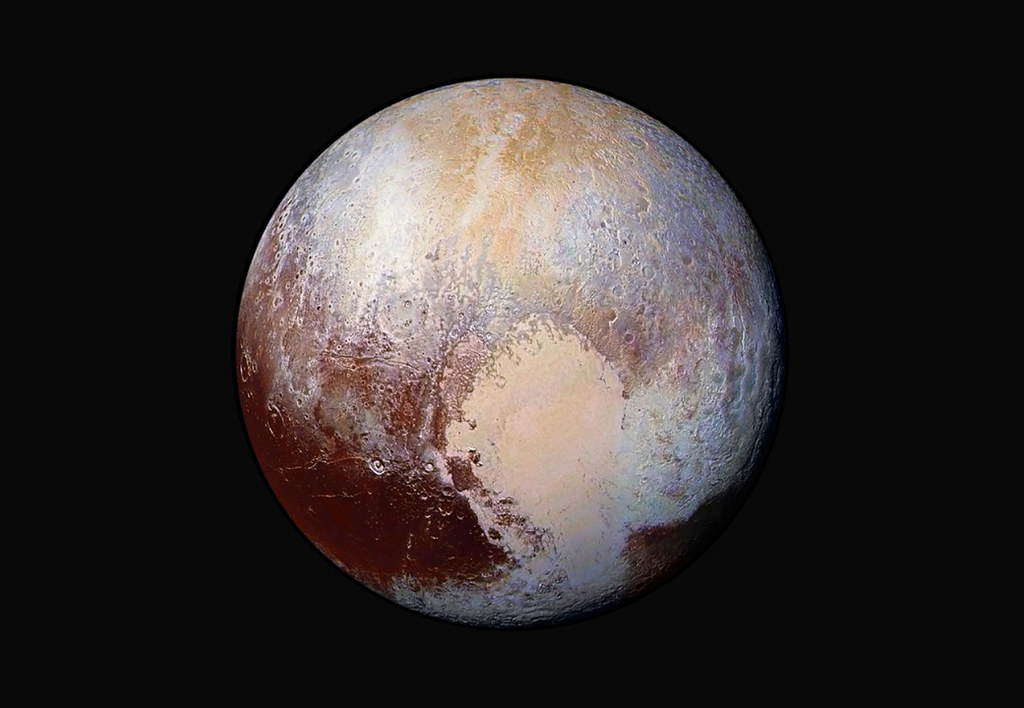- Discovery: Pluto was discovered in 1930 by Clyde Tombaugh. By 1905, however, Percival Lowell had already learned of the existence of another planet in the vicinity of Neptune and Uranus due to anomalies in their orbits. Tombaugh and Lowell were both American astronomers
- Dwarf planet: Pluto was long considered the ninth planet in our solar system. However, since August 24, 2006, Pluto has been classified as a ‘dwarf planet’. The reclassification occurred when the International Astronomical Union adopted a definition of what a planet is
- Day: 1 day on Pluto (the time it takes Pluto to rotate once around itself) is equivalent to 6 days and 9 hours here on Earth
- Year: 1 year on Pluto (the time it takes Pluto to rotate once around the sun) equals 248 years here on Earth
- Surface: Due to the long distance between Earth and Pluto, not much is known about Pluto’s surface. However, it is known that the temperature is -223 to -233 degrees
- Spacecraft: Pluto has never been visited by spacecraft from Earth. However, in 2006, the New Horizons spacecraft was launched and is scheduled to arrive in 2015
- Size: Pluto is smaller than Earth’s moon (the diameter is about 2,390 km, which is about 2/3 of the moon’s diameter)
- Gravity: Pluto’s gravity is much weaker than Earth’s (about 6% of Earth’s gravity)
- Rotation: Pluto rotates backwards (retrograde rotation) like Uranus and Venus, rotating from east to west. In practice, this means that the sun rises in the west and sets in the east
- Circuitry: Pluto has a very elliptical orbit; when Pluto is close to the sun, the ice dries and a thin, temporary atmosphere forms. When Pluto is further away from the sun, the temperature drops. Here, the atmosphere is thought to freeze – however, this is not a fact

Fact: Pluto was declassified from a planet to a dwarf planet in 2006
More facts about Pluto
- Moons: Pluto has 5 moons: Charon, Nix, Hydra, Kerberos and Styx. read more about Pluto’s moons here
- The sun: Pluto’s distance from the sun is 5.9 trillion km on average. However, Pluto’s eccentric orbit means that Pluto’s closest distance to the Sun is 4.4 trillion km and the furthest 7.3 trillion km
- Name: The name Pluto has a special story behind it: the idea for the name came from an 11-year-old girl named Venetia Burney from Oxford, UK. In 1930, she suggested to her grandfather that the newly discovered planet should be named after the Roman god of the underworld. The grandfather submitted the name to the Lowell Observatory and it was chosen. However, it should be mentioned that the name Pluto was also chosen because it starts with the letters ‘pl’, which are Percival Lowell’s initials and thus pays a bit of homage to Lowell. Technically, Pluto is now called ‘134340’ due to its reclassification as a dwarf planet in 2006
- Plutoids: However, when Pluto was declassified from a planet to a dwarf planet on August 24, 2006, the International Astronomical Union recognized Pluto’s special place in our solar system and decided to adopt the collective term ‘plutoids’ for all dwarf planets more distant than Neptune
- The Kuiper belt: Pluto is part of the so-called ‘Kuiper Belt’, a collection of asteroids, dwarf planets and comets orbiting Neptune, all of which formed early in the history of our solar system. It is hoped that the expedition to Pluto (New Horizon) – which will also visit the Kuiper Belt – will help us better understand the origin of our solar system. Pluto is the largest known dwarf planet in the Kuiper Belt
| Pluto’s profile | |
| Mass: | 1,250×1022 kg (0.00218 x Earth) |
| Eccentricity: | 0,2488273 |
| Diameter at the equator: | 2,390 km |
| Circumference at the equator: | 7,231.9 km |
| Circulation speed: | 4.7 km/s |
| Aphelion: | 7,376,124,302 km |
| Perihelion | 4,436,756,954 km |
| Average distance from the sun: | 5,906,440,628 km |
| Surface temperature: | -223 to -233 °C |


